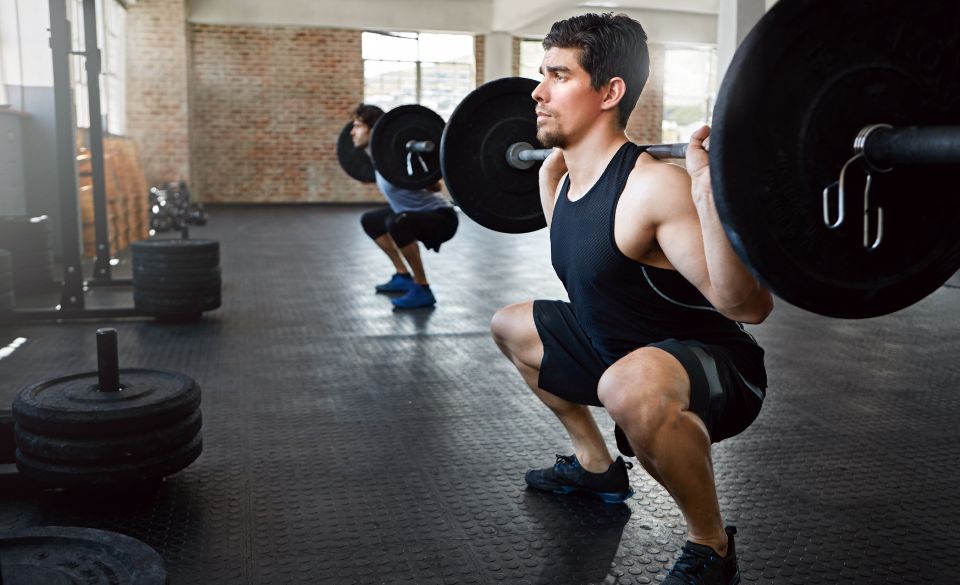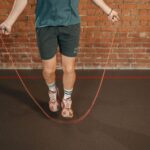
The 11 Best Squats For Runners
Page Contents
How Can Squats Benefit a Runner
Running is one of the most popular ways to stay fit and healthy. It’s an activity that almost anyone can do, regardless of age or fitness level. Though running is great for improving cardiovascular health and keeps your muscles in good condition, it’s important to incorporate other exercises into your routine to ensure you’re maximizing your body’s abilities. One such exercise is squats, a popular move that can help improve your running performance and even contribute to injury-prevention.
Squats are a compound exercise that target primarily the thighs, but also engage the glutes, quads, hamstrings, and core. When done correctly, squats help to build lower-body strength and power, improve balance and coordination, and increase stability and mobility. This can improve your running form and efficiency, helping you to run faster and for longer with less energy. Squats will also help to prevent the possibility of developing running-related injuries.
Strengthening your hips and core can improve your running gait and prevent common knee and ankle injuries. Squats can help by training your hip muscles to be more stable and provide greater balance throughout your stride. This in turn strengthens your glutes, quads, and hamstrings- all muscles you need to keep your body stable and maintain a balanced running form. Having increased hip stability makes your running strides more efficient and easier.
Whether you’re into park runs or marathon training, squats can also help improve your endurance and assist in recovery. The exercise helps to increase muscle power and build lower body strength which can help you maintain a better posture throughout your run. This concentration of energy in the lower body prevents energy from dissipating throughout the whole body, allowing you to control more muscle groups at once. The additional strength also helps to reduce fatigue, aiding your overall endurance.
The best way to incorporate squats into your exercise routine is to perform a series of sets with a specific weight and number of reps. A simple workout might include a set of squats with a barbell over your shoulders and your feet set wider than hip-width apart, 10-20 squats at a time. Consistency is key for maximizing the benefits of squats, and so it’s best to incorporate them into your regular workout routine. Squats are a great way to improve your running efficiency, reduce the risk of injury, and build lower-body strength and endurance. Take the time to incorporate this fantastic move into your routine and reap the numerous rewards that come along with it.
How Do Squats Prevent Running Injuries
The most common running injuries are due to overuse and include plantar fasciitis, iliotibial band syndrome, Achilles tendinitis, shin splints, and hamstring strains. Squats can help build strength in the lower body muscles and joints used during running.
The squat is an effective exercise that can help build strength and stability in the quads, hamstrings, glutes, and calves. These are the main muscles involved in running, and by doing squats you can ensure that you are able to support and move your body efficiently during a run. Strengthening the muscles and joints used in running can help to reduce the risk of injury.
Squats can also help to improve the range of motion in your hip joint, as well as your core stability. Improving your hip flexibility can help to improve your overall running form and posture, avoiding certain injuries such as IT band syndrome or lower back pain.
Core strengthening can help to improve balance, stability and your overall running mechanics. Strengthening the core muscles can help to reduce the impact placed on the joints and increase your running efficiency.
Finally, squats help to improve the muscles’ endurance and muscular stamina. This can help reduce fatigue during running and help to reduce your risk of injury.
In conclusion, squats are a great way to help prevent running injuries. The exercise can help to strengthen the major muscles and joints used during running, as well as improve hip flexibility and core stability. Improving endurance and muscular stamina can also help to reduce fatigue during running and lower the risk of injury. Squatting with perfect form and proper warm-up can help to ensure you get the most out of your workout and achieve your fitness goals.
The 11 Best Squats For Runners
Squats are an excellent exercise for runners since they target many of the major muscles used during running, as well as strengthening the core, improving balance and stability, and developing flexibility. While all squats are beneficial for runners, some squats are more effective than others and can help to improve running performance. Here are the 11 best squats for runners:
1. Goblet Squats: This squat variation is great for runners since it works both the upper and lower body and promotes good form. Using a weight (e.g. a medicine ball) held at chest level gives more resistance which can lead to improved strength.
2. Air Squats: This is the basic squat that everyone should know how to do correctly. Air squats are great for activating the glutes and strengthening the legs, thus increasing the power output during running.
3. Bulgarian Split Squats: This variation increases unilateral (single leg) strength and balance, important for running with one leg and for preventing running-related injuries.
4. Front Squats: The focus of this squat is on the quads, hamstrings, and glutes, muscles that create power in running. Using a weight (e.g. a barbell) positioned on the front of the body makes the exercise more effective.
5. Overhead Squats: This variation works the shoulders and upper body and is great for strengthening the running posture of the torso, decreasing the risk of back pain and upper-body injuries.
6. Landmine Squats: This variation uses a special barbell mounted in a corner so that it can be held in one hand while performing a squat. This movement is great for developing core strength and stability, as well as improving balance.
7. Squats with Band: Using a mini band placed around the thighs makes the squat more challenging as it provides resistance which increases muscle activation. This is great for improving the power output in running.
8. Pistol Squats: This single-leg squat variation increases the focus on balance and unilateral strength. This is great for improving running form and performance since running requires one leg to take the majority of the weight.
9. Sumo Squats: This variant requires the feet to be pointing outwards and is effective for activating the inner thighs and strengthing the glutes. Additionally, the stance requires the hips to move from side to side, which increases mobility and running efficiency.
10. Jump Squats: This variation is used to increase power and explosive strength, two qualities that are important in running. The key is to land softly in the squat position each time, so that the body is absorbing the shock of landing and not the joints.
11. Lateral Squats: This variation is great for developing the lateral muscles on the outer thighs, which is important for runners since the muscles help to stabilize the legs as they move from side to side.
Using these 11 squats regularly can have a positive impact on any runner’s training and performance, so don’t wait, start squatting today!


